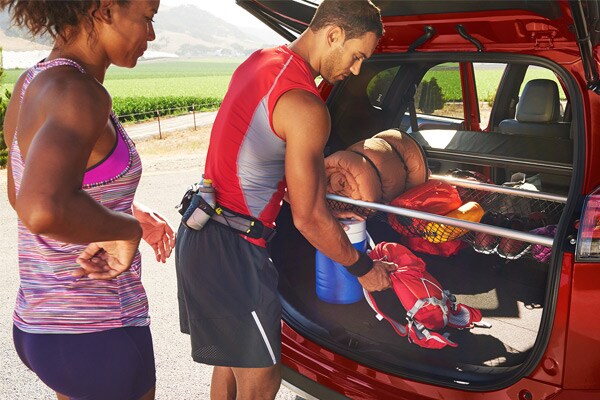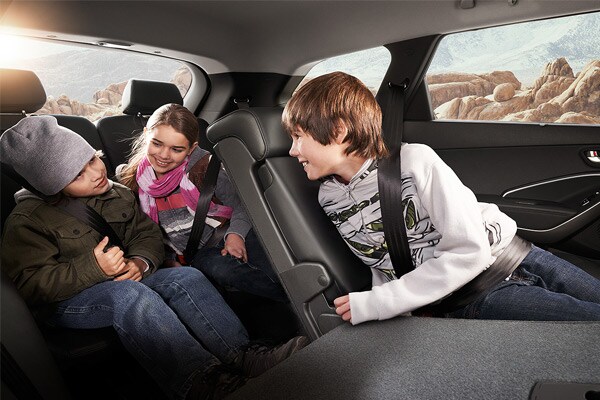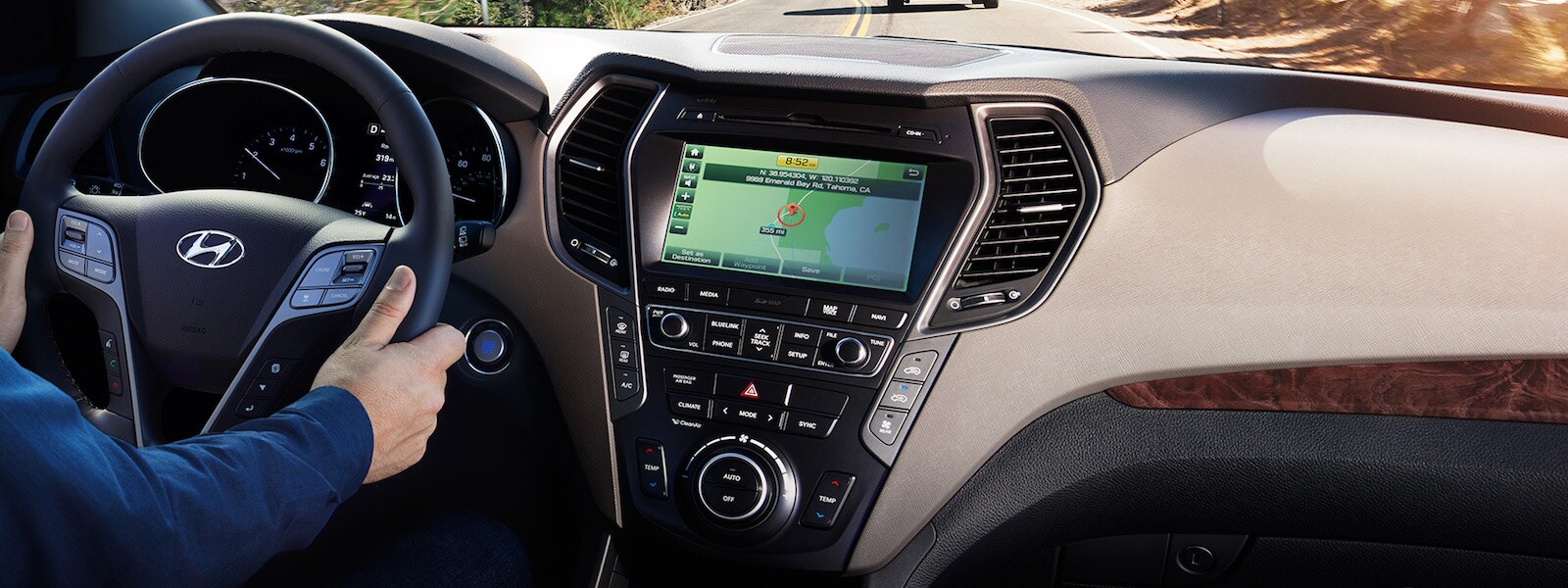
The Specs:
| 2016 RAV4 Limited | vs | 2017 Hyundai Santa Fe |
|---|---|---|
| 16 | Valves | 24 |
| 6 Speed Shiftable Automatic | Transmission | 6 Speed Shiftable Automatic |
| FWD | Drive Type | FWD |
| 24 MPG | Fuel Economy (City) | 18 MPG |
| 31 MPG | Fuel Economy (Highway) | 25 MPG |
Crossover SUVs are once again in vogue thanks to lower gas prices and new developments and improvements in the current crop of crossovers on the market. A notable new upgrade is the 2017 Hyundai Santa Fe. On the way to dealerships as we speak, the car has been greatly improved from its previous model, though Hyundai has avoided calling it a complete redesign. The new Santa Fe looks slicker and has more safety technologies including the advanced active safety features that put it in the running for Insurance Institute of Highway Safety's Top Safety Pick Plus award. But how does the new design compare to one of the other popular crossover SUVs, the Toyota RAV4? We put up the new 2017 Hyundai Santa Fe against the top-of-the-line 2016 Toyota RAV4 Limited in order to find out.
Performance

An SUV is a car for carrying cargo and carrying cargo requires power. The RAV4 Limited uses the same engine as most of the RAV4 lineup: a 2.5-liter naturally aspirated four cylinder linked to a six speed automatic transmission. This combination produces 176 horsepower and can tow up to 1500 pounds. This is pretty solid for most crossovers, but the 2017 Santa Fe significantly overpowers its Japanese rival. It is powered by a mighty 3.3-liter V6 that puts 290 horsepower at your disposal and gives you the ability to tow up to 5000 pounds. This gives it much better performance and utility compared to the RAV4 Limited.
Appearance
Both the 2016 RAV4 Limited and the 2017 Hyundai Santa Fe can carry plenty, but the Santa Fe has the size and the flexibility to easily carry most things you may be looking to transport. The RAV4 seats five, with two captains' chairs up front and a three person bench seat in the rear. The Santa Fe gives you a choice of seating configurations - a 6-seat or a 7-seat layout. The latter has the two front seats followed by a three person bench and a two person bench, while the former substitutes the middle bench for two more captains' chairs for extra passenger comfort.


Either configuration allows for more seating than the RAV4. The same story extends to the cargo area. The RAV4 can carry up to 38.4 cubic feet of cargo with the rear seats up and up to 73.4 with all the seats down. The Santa Fe, meanwhile, carries 40.9 cubic feet in a five-seat configuration and an amazing 80 cubic feet when all the seats are down..
Safety
Modern cars have plenty of high technology accoutrements and that is generally where high-end cars like the RAV4 Limited shine. The 2016 model is equipped with a touch screen, navigation, satellite radio, an active safety suite, a rear view camera and an Entune app suite. However, just the same features are also available on the 2017 Santa Fe and there are many new features that it brings that the RAV4 lacks. One of those is Android Auto integration. RAV4's Entune allows certain smart phone apps to be used on the car's touch screen. Android Auto, on the other hand, allows you to essentially control your Android-equipped phone and all of its applications through a straightforward touch screen interface in your car. Also unique to the 2017 Santa Fe is Hyundai Blue Link that integrates remote start, remote entry and stolen vehicle recovery in one package. It also allows Santa Fe vehicles with a navigation system to use Google Destination Search, bringing the power of Google Maps to your car navigation.
